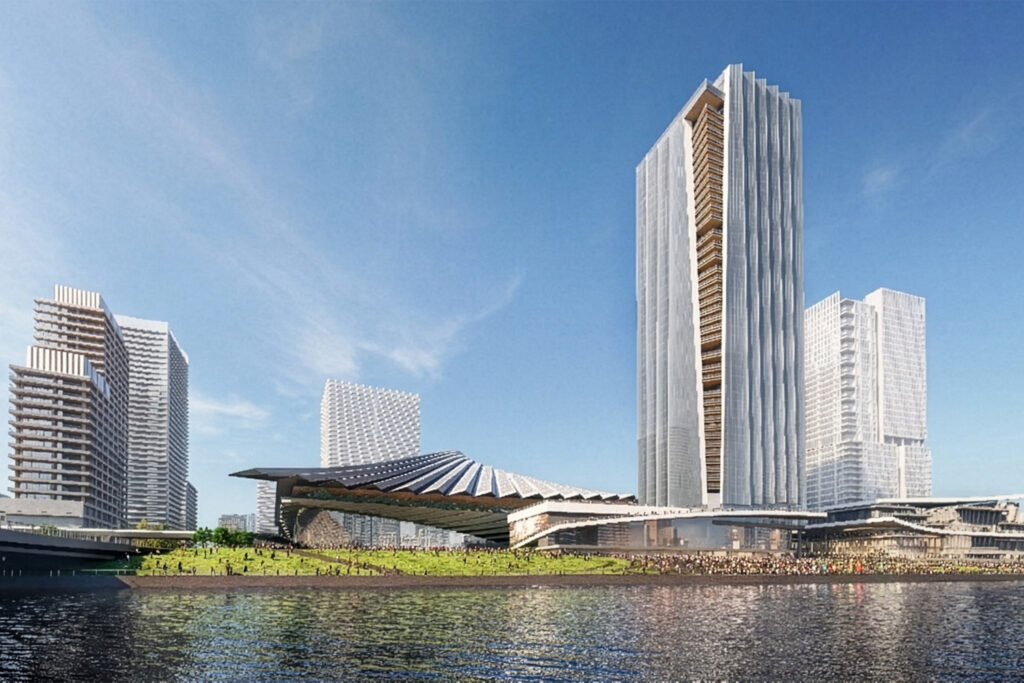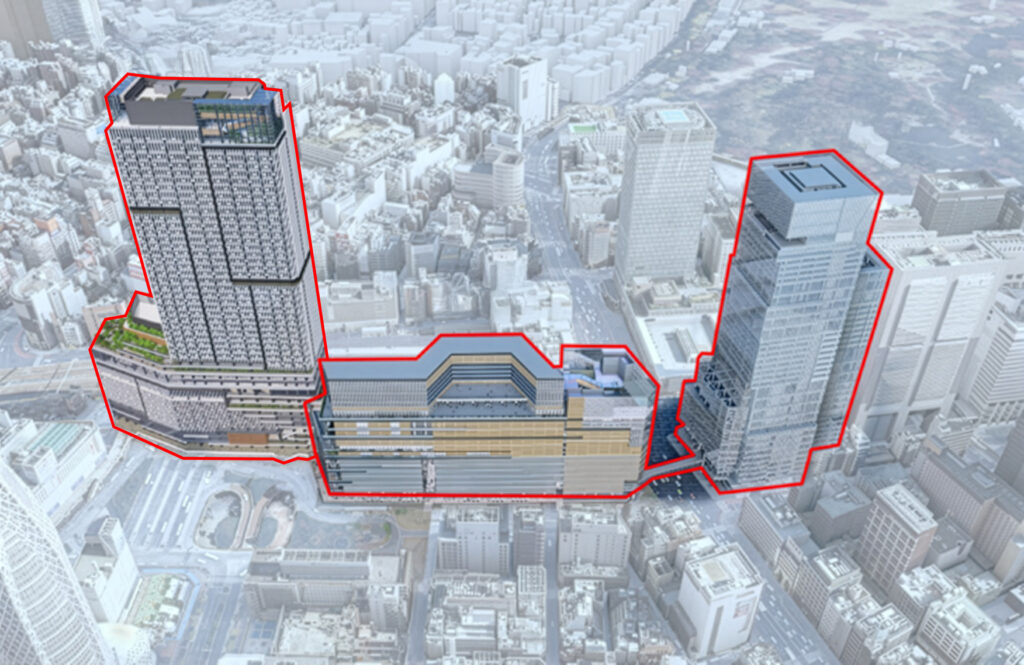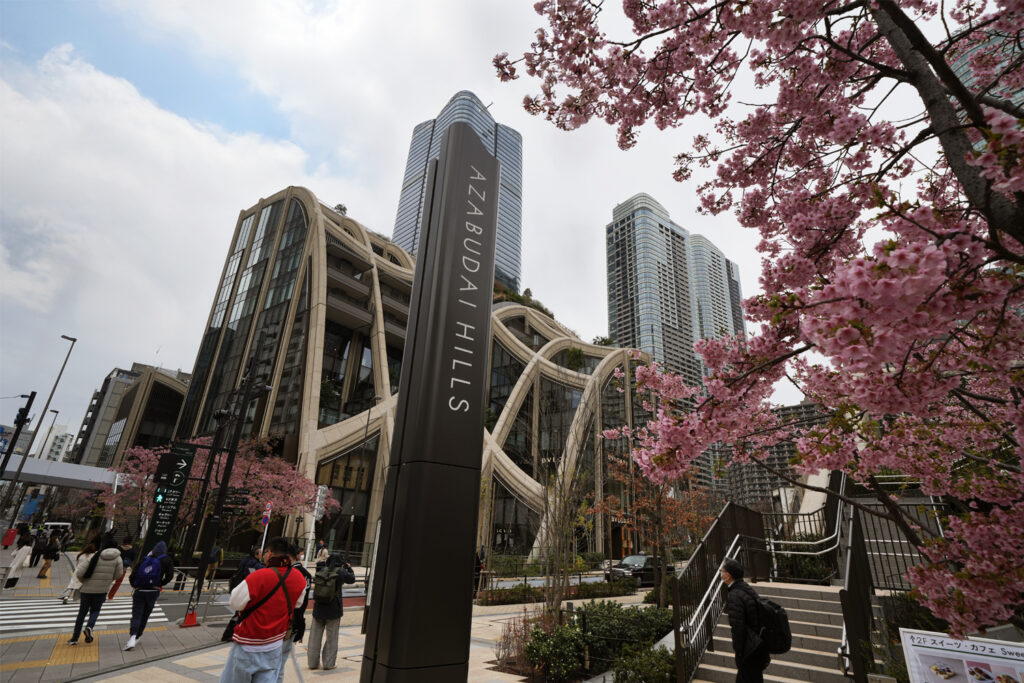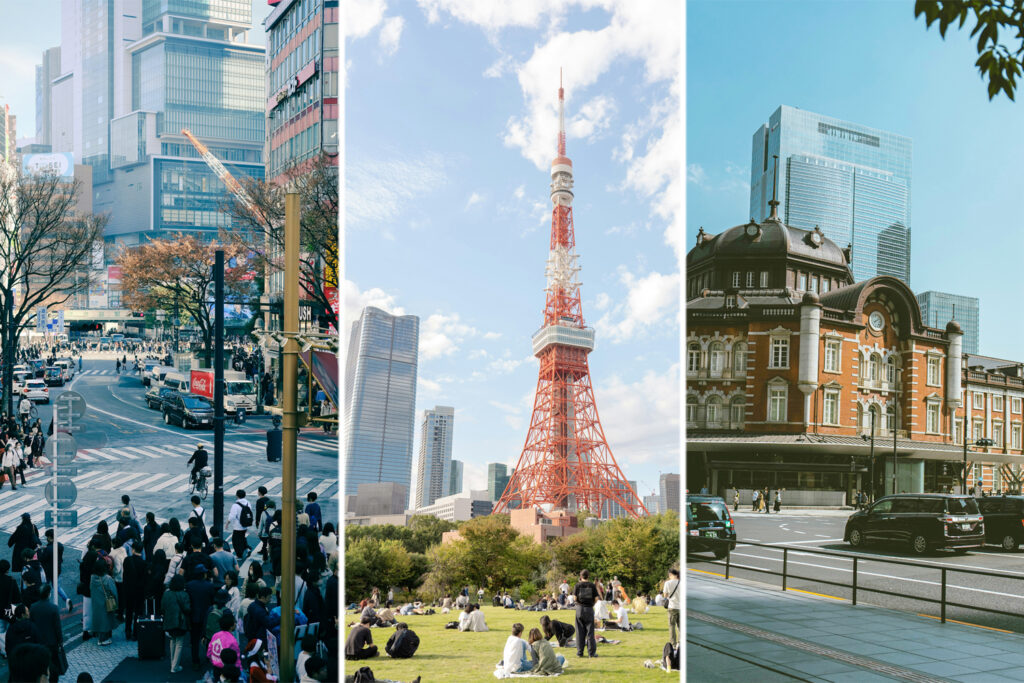Residential pricing has high chances of seeing significant appreciation immediately around Shibuya station as well as along the commuter lines running through the hub between 2017 and 2023.

This seems a very bold statement to make, however Shibuya is one of the most important sub markets of Tokyo residential real estate and it is currently undergoing a huge redevelopment that will dramatically alter its composition beyond current recognition.
Noticeable headlines – the station, new department stores and Google Japan announcing an office expansion are commercial trends that will directly effect residential demand.
In central Shibuya, there will be over 10 large scale new developments coming to completion over the next 5 years. According to Savills Japan, combined office and retail stock around Shibuya station will expand by over 800,000 square meters through 2023.
Major redevelopment projects around Shibuya Station – click to enlarge. Source: Savills Japan.
Although there are a number of construction projects going on around Tokyo, nothing else compares when you factor in scale, access and visibility.
Domestically listed IT companies in the area – click to enlarge. Source: Savills Japan.
These companies are looking to draw their talent from nearby universities, namely Aoyama Gakuin and Meiji University, that will directly impact the type and value of the homes that are in demand.
Starting annual wages for IT professionals working for large reputable companies are JPY 6 million going up to JPY 50 million depending on rank & position according to the Robert Walters Salary Survey of 2017. (pages 13 to 17 of link).
Simply put; the Shibuya station area will see an influx of highly paid staff at large stable companies between now and 2023.
It is important not to overlook how significant the retail landscape will change too. Traditionally, Shibuya`s appeal was with teenagers and young adults with limited disposable income. They would spend on their way home to the local residential neighborhoods from nearby schools.
Currently Shibuya is benefiting from the increase in tourist spending but moving forward, the further addition of luxury retail will target the same IT professionals coming to work in the area.
It is no stretch of the imagination to argue that due to increasing demand for places to live, residential pricing and rents will rise as well.
The Shibuya station area will not be the only benefactor though. Shibuya is an important hub station where trains from three Tokyo Metro subway lines continue out on two tracks operated by Tokyu; the Denechofu line and the Toyoko line providing simple access to Kanagawa prefecture. Additionally the Keio Inokashira line begins in Shibuya connecting the hub to west Tokyo.
All of these lines run through Shibuya wards adjacent Setagaya and Meguro wards. While Shibuya ward has seen aggressive price increases over the last 5 years, Meguro and Setagaya wards have lagged.
Average prices between 2000 and 2017 in central Tokyo wards – click to enlarge. Source: Tochidai.info
The completion of Shibuya’s developments will further stimulate population growth as younger workers are attracted to Shibuya with stronger wages. It is again no stretch of the imagination to argue that stations on these three lines within a 15 minute ride to Shibuya station will see the most aggressive price and rent rises in the mid to long term.
For more information on the individual developments going on in Shibuya, ShibuyaStation.com provides a comprehensive overview.














